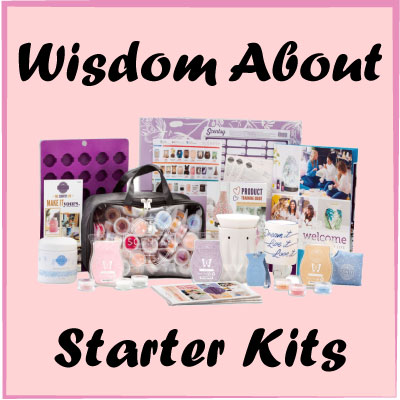 Starter kits are important. A starter kit should not be just a box of stuff you are sending to new representatives. What you put in them, how much you charge, and how they look when they are opened, matters.
Starter kits are important. A starter kit should not be just a box of stuff you are sending to new representatives. What you put in them, how much you charge, and how they look when they are opened, matters.
Kit Options
Before we discuss what should go into a starter kit and how you should charge for a kit, let’s talk strategy.
You can choose to offer only one starter kit, or provide choices by offering optional higher-priced kits. If you decide to offer choices, don’t offer too many because too many choices make it difficult for people to make a choice. We suggest a maximum of 3 starter kit options.
Business Opportunities
In 23 states, business opportunities are strictly regulated. To avoid being subject to business opportunity regulations, price your least expensive starter kit below the lowest threshold dollar amount for states which is $200.
Also, be sure to be mindful of the states which include required payments over one’s first six months as subject to the threshold. The price of your least expensive starter kit plus all required payments for the first six months should total less than $200.
Contents
The primary purpose of a starter kit is to get your reps off to a good start. Starter kits usually include training materials, sales aids, and product samples.
Think about what your reps absolutely need to have to be successful, and be sure to include these items in your basic starter kit. Anything that isn’t essential, but would be nice to have, can be included in your higher-priced kit options.
If yours is a party plan company, we recommend that you include enough supplies and product samples to conduct at least 3 home parties.
The most important item in your starter kit is clear instruction on what tasks new reps should do first and when they should be done. Don’t assume they know what to do after they open the box. They don’t know unless you tell them.
Some companies decide not to ship a starter kit to their new representatives. Instead, their kits are “virtual” which means you can read all the training materials online, and print off forms and brochures from the website.
If the product or service you are selling can’t be delivered in a box, this may be the reason you are thinking about not shipping a kit. However, this is not a reason not to ship a kit. You can still include training materials and sales aids in your kit.
Consider this… The more you communicate with your reps, the more engaged and invested they will be in your income opportunity. If you choose not to ship a kit, you will lose the opportunity to communicate with your newest reps in this tangible manner.
Pricing
It is recommended that you price your required starter kit just above your cost. This will be important if you choose to join the Direct Selling Association as their Code of Ethics for all members includes a provision that starter kits are sold “at cost.” For this calculation, the cost of your starter kit can include warehousing space and labor for kit assembly and shipping.
Set the prices of your required starter kit with consideration for the appropriate barrier to entry for your income opportunity. Most direct selling companies generally charge between $0 and $200 for the required starter kit or enrollment fee.
We don’t recommend charging $0, because while it will very easy to recruit when it costs nothing, people who pay nothing generally do nothing. It’s important to have “skin in the game.”
Conclusion
Treat your starter kits with the same care as your primary products. We say starter kits are your secondary products. Product development applies to starter kits, too.

 Jay Leisner, the President of Sylvina Consulting, is a top compensation plan and direct selling expert, a trusted adviser to new and established network marketing and party plan companies. For more than 30 years, Jay has enjoyed assessing and improving network marketing, party plan and referral marketing companies across the globe.
Jay Leisner, the President of Sylvina Consulting, is a top compensation plan and direct selling expert, a trusted adviser to new and established network marketing and party plan companies. For more than 30 years, Jay has enjoyed assessing and improving network marketing, party plan and referral marketing companies across the globe.
Leave a Reply